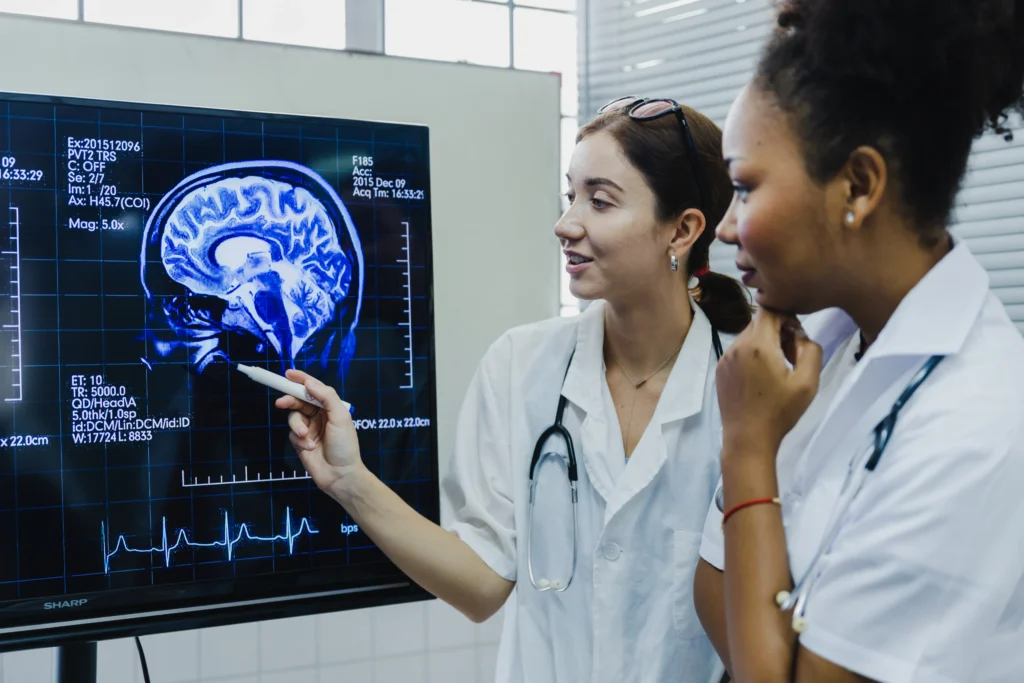What is Epilepsy?
Epilepsy is a chronic neurological condition that is usually accompanied by a predisposition to generate epileptic seizures. It is one of the most common disorders of the nervous system and affects people of all ages, ethnicities, and socioeconomic backgrounds.
- Home
- What Is Epilepsy?
- Home
- What Is Epilepsy?
Epileptic Seizures
What are Epileptic Seizures?

Types of Seizures
What are the different types of Epileptic seizures?
Seizure triggers vary but can include stress, sleep deprivation, alcohol, certain medications, illegal drugs, menstrual cycles, and flashing lights, although this is rarer than one may realise.
- Manifest as odd sensations like déjà vu or strange smells.
- May include stomach "rising" sensations or prickling limbs.
- Maintain awareness, often serving as a precursor to other seizure types.
- Can involve extreme emotions like fear or happiness.
- Involve involuntary actions like lip smacking or hand rubbing.
- Unresponsive during the event and won't recall it afterward.
- May include unintentional sounds or chewing/swallowing movements.
- Typically last a short duration and impair consciousness.
- Two phases: tonic (stiffness, loss of consciousness) and clonic.
- Often accompanied by bladder/bowel control loss and tongue/cheek biting.
- Leave individuals with headache, memory issues, and exhaustion.
- Last a few minutes and require medical attention if prolonged.
- Brief lapses in awareness, often in children.
- Characterized by vacant staring and minor twitches.
- Last up to 15 seconds and are not remembered.
- Can occur at any age but commonly seen in childhood.
- Sudden, shock-like body twitches or jerks, often upon waking.
- Brief but can occur in quick succession.
- Consciousness usually maintained during these seizures.
- Typically involve isolated muscle groups.
- Rhythmic jerking movements without initial stiffness.
- Can lead to unconsciousness.
- May involve repetitive, rhythmic movements of limbs or face.
- Consciousness may be altered during the event.
- Abrupt stiffening of muscles.
- Often causing falls due to sudden muscle rigidity.
- Can result in injury if not in a safe environment.
- Brief duration, but recovery may take longer.
- Sudden loss of muscle tone.
- Potential for falls due to sudden muscle relaxation.
- Brief duration, typically lasting only a few seconds.
- Can lead to injuries if not in a safe environment.
- Prolonged seizures or series of seizures without regaining consciousness.
- Requires immediate medical attention.
- Can lead to brain damage or life-threatening complications.
- Medication or intervention needed to halt the seizures.
ADD TITLE HERE
What causes Epileptic Seizures?
Seizures are due to erratic and hyper-synchronous neuronal brain activity. The brain is made up of billions of nerve cells that communicate through electrical and chemical signals.
During a seizure, the normal pattern of neuronal activity becomes disturbed, causing strange sensations, emotions, and behaviour or sometimes convulsions, muscle spasms, and loss of consciousness.
The underlying causes of epilepsy are varied and can include genetic factors, congenital abnormalities or genetic conditions that result in brain malformations, severe head injury, stroke, and brain tumours. However, in about half of all cases, the cause of epilepsy is unknown.
Epilepsy can have a substantial impact on a person’s quality of life, including relationships, educational opportunities, employment, driving, and even day-to-day activities. Nonetheless, with appropriate treatment and management, many people with epilepsy can lead full and active lives.
Conventional Treatment Paths and Outcomes
Epilepsy is typically managed with medication, although in some cases surgical intervention may be recommended. The medication, known as antiepileptic drugs (AEDs), is designed to prevent seizures from occurring. While many individuals can control their seizures with medication, others may have difficulty achieving seizure control.
However, as with all pharmaceutical medication, there are side effects associated with AEDs. These range from minor to severe, and also depend on the overall health of the patients, as well as interactions with other drugs they may be taking.
Common side effects of epilepsy medications can include:
The variability in outcomes using AEDs, along with the potential side effects, underscores the need for a broader range of treatment options and comprehensive care.
rashes
vision
Why Choose Us
PW Therapy's Approach
At PW Therapy, we understand that every epilepsy case is unique, which is why we adopt a personalised, holistic, and functional approach to treatment. Our highly successful program focuses not only on the symptoms but also on the underlying causes and overall health and happiness of our patient’s lives.
Why PW Therapy is Different
Personalised Treatment Plans: At PW Therapy, we excel in crafting bespoke treatment plans that precisely align with your unique needs and circumstances. We use methods that are not only time-proven but also bolstered by scientific research, however, we meticulously customise and adapt everything we do to ensure it is precise for the needs of the patient.
Education and Empowerment
Transparency and communication are key components in all our patient success stories. We keep you informed and involved in every stage of your treatment and ensure we educate you to have the power to continue your recovery alone.
Innovative Therapies
We excel in the seamless integration of cutting-edge scientific medical advancements with a holistic and functional approach. We pride ourselves on our expertise in achieving comprehensive healthcare solutions.
Holistic Strategies
Our approach goes beyond medication, as we seamlessly integrate nutritional and supplemental guidance, lifestyle adjustments, and stress management into our care philosophy.
Supportive Environment
Our team provides a caring atmosphere that values your well-being, dignity, and respect. We listen to your needs and ensure our journey together is a joint venture.
Quick & Effective Treatments For All Conditions!
Because we put in the time to get to know and understand our patients and their ailments, our results are quicker and longer lasting.
We don’t follow the crowd in treating the symptoms, we find and treat the causes.
